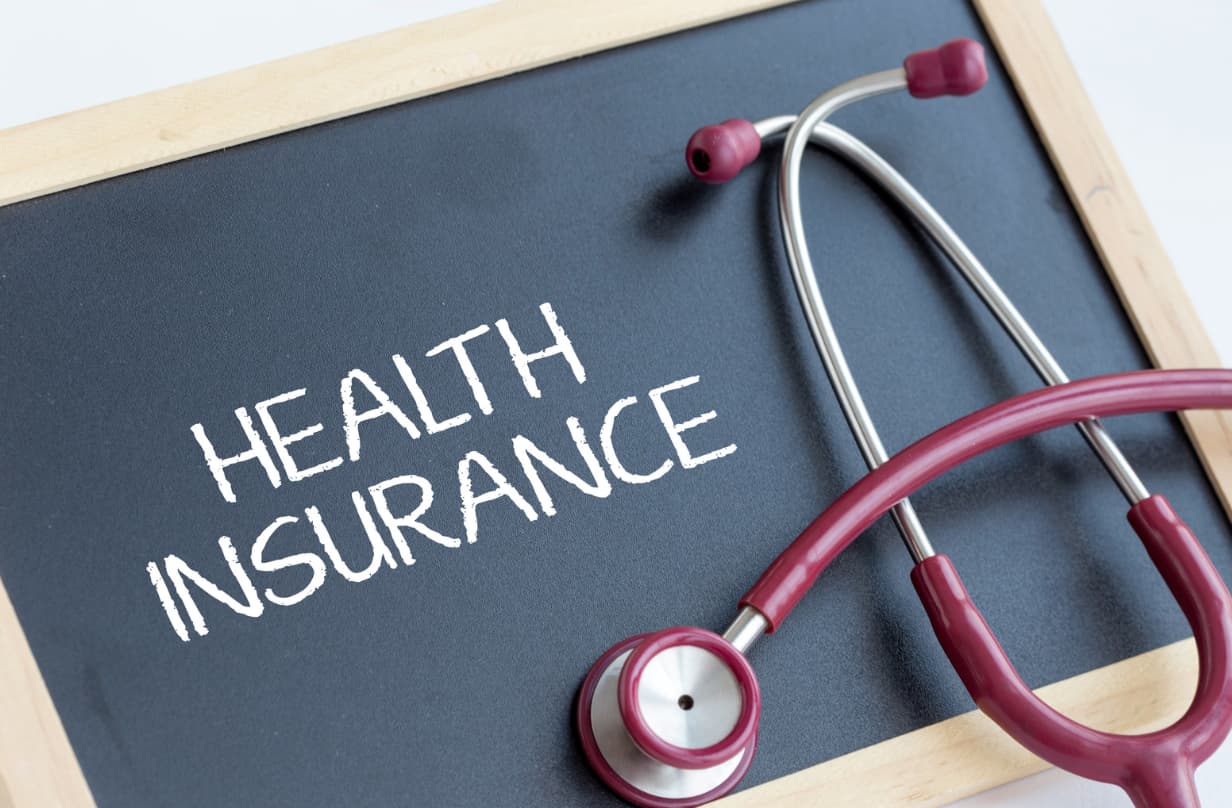A Proven 4-Step Guide to Health Insurance Lead Generation
Does your calendar look empty? Not enough sales calls being booked for your health insurance business? A lack of booked appointments can be boiled down to one problem and four solutions.
The problem: Not enough health insurance leads. To grow your health insurance business, you need to put yourself in front of more people.
There are four best ways to get more health insurance leads:
1. Powerful Paid Advertising
2. High-Converting Landing Pages
3. Effective Email Marketing
4. Compelling Content Creation
Let’s go over all four in depth, so that you can start getting exclusive health insurance leads ASAP!
1. Powerful Paid Advertising
Did you know that more than 3 million businesses use Facebook to advertise their products and services, with over $2 billion being spent each year?
Close to $200 million of that ad spend goes into the healthcare industry, or just about 10% every year, according to Statista. If you’re not spending money on paid ads to acquire new health insurance leads, you’re missing out.
How Much Should You Pay For Health Insurance Facebook Ads?
The cost of a health insurance lead depends on geographical location, ad targeting, and campaign setup. The average CPA (cost-per-acquisition) in the healthcare industry is $12.31.
Focus on making better ads and landing pages to lower CPA.
How To Set Up Your Facebook Ad Campaign
When using Facebook ads to generate health insurance leads, you’ll want to spend most of your time outside of the ads manager. Focus more on making great creatives, offers, and copy.
Before we get into how to do that, here is how to set up the campaign:
- Make an account in Facebook Ads Manager
- Create a new campaign
- Campaign Objective: Leads
Ad Set Level:
- Location: United States
- Conversion location: Website
- Set up Facebook Pixel
- Age & Gender: Depends on your client avatar
- Turn on Advantage Plus Placements
- Keep interests broad
- Budget: Minimum of $50 per day
Ad Level:
- Upload creatives, write copy, pick CTA
- Launch
Let’s discuss how to make great ads, so you can start selling more health insurance.
How To Create An Offer
To make great Facebook ads for health insurance you need to understand one thing. Pain.
I don’t mean physical pain (although it could be) but the mental pain your current and future clients face.
Why do people buy health insurance? Is it to feel safe? Is it because they’re scared of being injured and need affordable healthcare? Pinpoint the pain that you solve for others.
Value is created when pain is alleviated and to make the best offer for your Facebook ads, use this mental framework:
Next, you’ll want to list out the benefits of your service. Maybe you have affordable plans or people can sign up hassle-free. Whatever your offer is, write it down as this will be the center of your ad.
Now that you’ve gathered the reason why someone buys health insurance/the pain they are trying to alleviate, it’s time to create the ad.
How To Create A Hook
The hook can be:
- The first 5 seconds of your video ad
- The image you use
- Your headline/first sentence of the copy
There are two formats of ads on Facebook: Videos and images. The psychology behind a great hook does not change. There must be a pattern interrupt for the person scrolling.
Think about all the times you skip an ad. Probably a lot. This is because the hook is not strong enough, did not target the correct audience, or had an average offer.
When someone comes into contact with a stimulus (an ad) over and over again, they become desensitized to that stimulus. Meaning if your ad looks exactly like every other ad and promises the same things that a person who’s chronically on Facebook has already been exposed to, they will simply keep scrolling. No bueno.
You don’t always have to reinvent the wheel or be super creative, but you do have to capture attention. Capturing attention simply means evoking a relatable feeling of pain towards the scroller or invoking curiosity. This is usually done within the first 5 seconds of a video ad. Or the photo/headline of an image ad.
Let’s take a look at some image ad examples:
Why is this a good ad?
- Stops people who want to be healthier from scrolling, and peaks interest with POV images.
- Offering something for free. Very valuable.
- Sells how easy and stress-free it is to order and cook healthy food.
- Emojis to capture attention.
If we use our ad framework chart from before, this is how it would look:
Why is this a good ad?
- Sells the dream. People can picture themselves there.
- Low fares means saved money.
- Evokes a feeling of freedom that is within reach: “at your doorstep”.
You get the point. Create an offer that alleviates pain, and relate to that pain through copy and visuals.
Besides the hook and the offer, what else do we need for a great Facebook ad? The last ingredient is a CTA.
Creating CTA’s For Facebook Ads
This is the easiest part of the ad. You just want to tell the potential lead what to do next.
Some popular CTA’s are:
- Learn More
- Shop Now
- Sign Up
- Contact Us
- Book Now
Repeat the CTA at the end of the video/bottom of the text and have a button under the ad that takes them to a form, website, or landing page.
Speaking of landing pages, how do you make sure the people who click your ad contact you?
2. High-Converting Landing Pages
To create landing pages that generate health insurance leads, you need:
- A bold headline with your offer
- An easy way for someone to send their contact information/book a call
- Bullet points describing the benefits they get after buying your health insurance
Use the software ClickFunnels to create the actual landing page. To make sure you only get booked calls with qualified prospects, you can create a survey page. The worst thing is being on a call with someone who doesn’t know where they are.
Here’s how to get qualified health insurance leads from a landing page:
1. After someone clicks your ad, they must be taken to a landing page with your offer and a series of questions.
2. The questions should include the most important information you need to know about someone to make sure they are qualified for your health insurance plan.
3. This may include how many family members they have, the state they live in, their insurance history, etc.
4. Finally, you’ll want to ask for their contact information. Name, email, phone number.
5. You can set up automated emails and messages to let the lead know if they qualify for your health insurance plan using software like GoHighLevel.
Check out this health insurance landing page as an example. If you want to skip qualifying leads through a survey, and just want more leads to book calls, it becomes more simple.
All you need is the Calendly software integration on your landing page, which creates a seamless way for a lead to book a call or a sign-up form.
Include your offer and benefits right next to a calendar/sign-up form with available times for them to book. Similar to ads, the most important part of a landing page is a great offer, as well as a clear CTA.
Here is an example. Notice the bold letters, not too much text, and a clear action step:
Follow-Up Sequence For Leads
Now if you go with a landing page like the one above, you’ll need a follow-up sequence to nurture the lead. Here’s how to make a follow-up sequence:
Lead: Books an appointment…
Send email and text within 1 minute of them submitting their information.
Hey (first name), thanks for booking your Free Personalized Medicare Consultation!
You are scheduled for (date and time of appointment)
Before your call, here are some important details to know:
(list important details in bullet points)
See you soon!
Thanks,
(your first name)
After this is sent, you’ll want to send a reminder 24 hours before the appointment and a reminder 1 hour before the appointment. It’s that simple. Once again, you can create automated flows using GoHighLevel.
But wait. What about the people that sign up/book an appointment, but don’t show up? How can you recapture the interest of people whose email you already have? AKA warm leads.
This is where email marketing for health insurance comes into play.
3. Effective Email Marketing
The email marketing machine for health insurance requires three cogs to turn correctly:
1. Deliverability
2. Open rate
3. Readability
How To Make Sure Your Emails Don’t Go To Spam
This part is a bit technical but essentially you need to warm up your domain. An email domain is what appears after the @ sign. Example: [email protected]. resultcalls.com is the domain.
Before the warm-up, you need to buy a burner domain. This is to make sure that in case Gmail flags or bans your email, your main domain that hosts your website is not affected. With the following technique, gmail won’t ban your domain but it’s better to be safe than sorry.
You can purchase a burner domain (they are cheap) at Squarespace. After this is done, use Instantly.ai to warm up your domain using their warm-up feature.
Follow their instructions on setting up a DMARC, DNS record, and SPF. You’ll want to let the domain warm up for 2–3 weeks. Keep in mind you can make up to 3 email accounts with the same domain.
Now it’s time for the fun part.
How To Get Your Emails Opened
There is one thing besides deliverability that is responsible for email open rates. The subject line. There is no need to overcomplicate this. All we need is to invoke a sense of curiosity or create a pattern interrupt based on the hundreds of other emails people get each day.
Here are the most popular subject lines that have been proven to work:
- (first name), quick question
- Do you need this (first name)?
- Invite for (first name)
You can read about more subject lines on this Hubspot blog. Keep them short, vague, lowercase letters, and avoid using spam words like “free” or “ASAP” or “discount”. The next and final cog in our email marketing machine is getting the email read.
How To Get People To Read Your Emails
So now that you’ve got your emails delivered and opened, how do you get your leads to read them? The first thing is skim-ability. People don’t read emails, they skim through them.
If you want people to read your emails, structure them in a way that is easy to skim:
- Short sentences
- Easy grammar
- Spacing between each sentence
- Bullet points when needed
- Should take less than 30 seconds to read the full email
The actual contents of your email should be straight to the point. If you’re writing to a list of warm leads who booked an appointment but never got on a call, simply remind them who you are, and what they signed up for (your offer) and ask them to take action.
Warm Email Example:
Hey (first name),
This is (your first name) from (your company name).
You recently filled out a health insurance plan form.
If you’d still like (state offer again), book a time here!
See you soon,
(your first name).
P.S. Slots are filling up quickly so don’t wait too long!
Adding a P.S. is a great readability hack, the most read parts of an email are the subject line and the P.S. message.
Follow up about three more times every two days with short emails saying “Did you get a chance to book a call?”.
Now that you know how to recapture lost leads using email marketing, how do you attract a cold audience to get more health insurance leads?
4. Compelling Content Creation
Creating content to generate more health insurance leads is a no-brainer in the 21st century. Why is content creation so great?
- It’s free to do
- It lasts forever which compounds over time
- Great source of inbound leads
- Builds you as an authority figure in your industry
- Provides free value to people
Don’t just take my word for it, check out these content marketing statistics from Siegemedia:
So what are the most effective content channels?
- Blogs
- Video posts
- Image/text posts
The best part about content creation is that you can repurpose it. So if a video does well on YouTube, you can upload it to Instagram. Not enough video ideas? Write some blogs and turn them into video scripts.
Post content on:
- Youtube
Post blogs on your website to build SEO. Post videos on Instagram/Youtube in a short form (less than 1 min) or long form (5 minutes +) format to grow an audience. Post images/text-based content on Facebook to also grow followers and traffic to your page.
But what should you talk about?
Creating The Content
Similar to ad creation, the formula for great content is:
Retention + Value = Engagement (views, likes, subscribers, followers, etc.)
Let’s break it down even more.
Retention = Hook that invokes pain or curiosity.
Value = Solving the pain from the hook or answering the question to satisfy curiosity.
That’s it. But let me give you some examples to really bring this home.
Example 1: Blog about important facts to know before buying health insurance.
Headline/Hook: “The 5 Most Important Must-Knows Before Buying Health Insurance”
Value: List out each point in a clear way that answers the question of the most important things to know before buying health insurance.
Example 2: Video on YouTube that gives a health insurance policy overview/defines terminology.
YouTube title and intro/Hook: “How Does Health Insurance Actually Work?”
Value: Explain the in’s and out’s of health insurance and give watchers important terminology to know.
Example 3: Facebook post discussing how to spot red flags in a health insurance plan.
First sentence/Hook: “You could be setting your money on fire with your current health insurance plan, here’s how to avoid that”.
Value: Provide information on how to spot the red flags and how to not lose lots of money with health insurance plans.
After you’ve hooked the audience and are providing value, how do you continue to retain them?
For blogs, make the content readable. This means adding bullet points, subheadings, and shorter sentences with easy grammar.
For videos, be enthusiastic. Use your voice, editing techniques, and storytelling to get your message across. Always keep in mind that people have short attention spans.
By the end of the blog, video, or text post, you can mention your offer + CTA. This can be:
- like the video or subscribe
- visit a link to your sign-up page
- consume another piece of content from you.
If you’ve provided enough value, people will be more than happy to take action on what you tell them to do.
Action Steps
1. Make an account in Facebook Ads Manager and create a mock campaign to get used to the interface. Follow the instructions in step 1.
2. Fill out the four square grid in step 1 based on your health insurance business and offer. Start coming up with ad angles.
3. Start building out your first landing page, and study some more videos on YouTube on the technical aspects.
4. Buy a burner domain, start warming it up, and brainstorm 5 different subject lines to test when you have a list of warm leads.
5. Pick one social media platform and one format of content to begin posting. Start brainstorming how you can provide value to people who want to learn more about health insurance.
FAQ
Q. How do I get health insurance leads?
A. To get more health insurance leads, follow these steps:
- Create a core offer to advertise to your client avatar
- Pick one advertising channel to distribute your offer
- Master that channel by working on it every day.
- Some channels include paid ads, content, outreach, SEO, etc.
Q. How to make Facebook ads for health insurance
A. To make high-converting Facebook ads for health insurance, you need to test as much as possible. Following the principles of the scientific method, running constant tests on copy, offers, creatives, and campaign setup, you are bound to succeed at some point.
Determine a budget, come up with the biggest pain points your clients face, and translate that pain into an offer, creative, and CTA to get more health insurance leads.
Q. How to sell more health insurance
A. Selling more health insurance requires more lead flow. Focus on volume of sales calls by increasing the inputs of your advertising channel. If you make content to get leads, post more. If you run paid ads to get leads, pay more. If you do cold outreach to get leads, send more messages.

Alex Gambashidze
Marketing Associate at ResultCallsHello everyone! My name is Alex and I write these blogs to help educate small business owners on different ways to grow their business. My goal is to make lead generation as easy as possible for you. After reading these blogs, I hope you leave with some actionable steps that will get you closer to growing your business :)
2,000+
Happy local businesses
See what some of them have to say.


